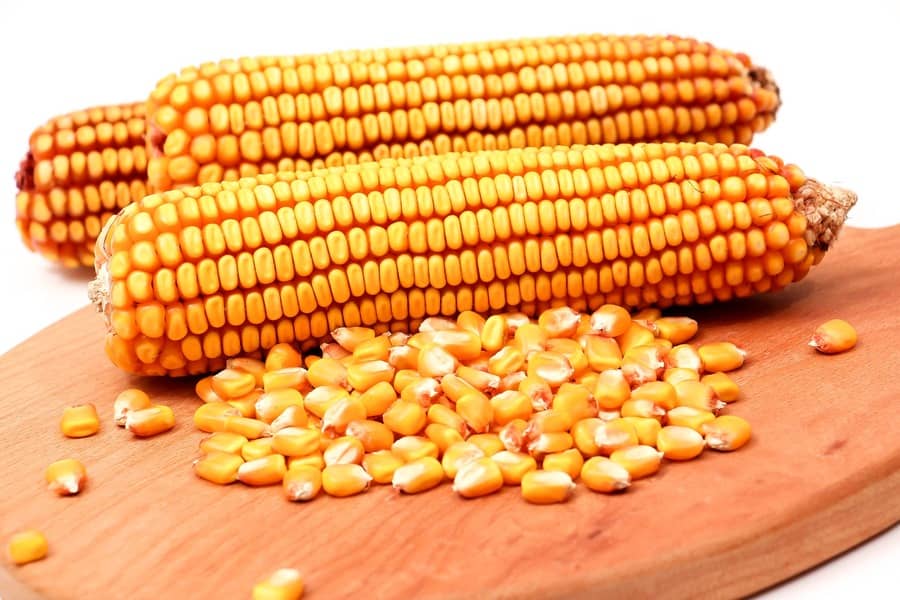Porto Alegre, October 25, 2021 – The US crop exceeds half of the 2021 harvest. Seasonally, the time would be of pressure on international prices, not least because prices are high for growers, and selling would be natural. However, the market resists this movement. The expectation towards the 21/22 export cycle, high wheat prices, and some concern about planting decisions for the 2022 season, due to high production costs, create resistance to seasonal low prices on the CBOT. So, is the market creating an environment in which corn and wheat, with strong global demand, could maintain above-average prices throughout the 21/22 cycle?
Some strange and distorted market movements this October. In Brazil, even with the strong fall in production in the 2022 second corn crop, prices have declined every week and contradict the theory of a tighter than expected picture. In the United States, with the harvest of the second largest crop in history, prices are almost USD 2.00/bushel above the normal average, and there is no room for seasonal lows for corn. Why do not corn prices go down during the US harvest?
The moment seems to combine several indicators, among them:
– The visible rise in production costs due to the fertilizer market. Extremely high prices of urea and other fertilizers may be restricting the intention of US growers to make purchases in advance for the 2022 second corn crop. As a result, they do not sell physical corn or buy future fertilizers;
– High price of wheat. Wheat currently has very high prices in the US and international markets. On the CBOT, at USD 7.50/bushel against a normal average of USD 5.00. Expensive wheat makes corn have a proportional correction upward;
– Global demand. With Brazil having supply constraints, Argentina closing new registrations, and Ukraine rising prices, global demand ends up converging into US corn, which, despite being historically expensive, is still more accessible than that from other exporters. Although the US weekly exports have been still relatively discreet, only slightly surpassing the level of 1 million tons, the expectation toward demand is strong;
– Uncertainty about China. The corn harvest in China, according to information from the region, is between 70 and 80% complete in more technified crops. Corn prices have dropped in recent weeks in northeast China, the region with the highest production, but have not dropped in the same proportion in the center-south, where the largest volume of consumption is located. This situation opens up the possibility that China may return to the market at any time and increase business with US corn for shipments from the end of the year. China has 11.3 million tons purchased in the United States in the current business year, 21/22, against 10.3 million in the same period last year. But, so far, it has only shipped 144 thousand tons. This slow shipment, on the one hand, holds CBOT prices, but on the other maintains the expectation of good flow ahead;
– Below-average stocks. The ending stocks for 2021 hit 31.5 million tons and are forecast at 38 million for 2022. Even with the projection of improvement, it will still remain below the ideal average of 50 million tons to rebalance prices at USD 4.00/bushel. So, the market is balanced today for the current stock profile and it could accelerate if global demand forces another cut in stocks ahead;
– Oil. With rising oil prices, there is additional and unexpected potential demand for biofuels. In this case, corn and soyoil are the main targets. US ethanol production set a weekly record with a 6.3% growth. Soyoil showed a strong price increase with the possibility of greater use in biodiesel. These are factors that help corn and soybean prices not to have pressure during this harvest period.
The issue now is that the US harvest is coming to a final stage. From then on, corn will be stored in warehouses in wait for the growers’ sales decisions. If growers only decide to sell corn when urea prices fall or when the exchange ratio improves, pressure on prices may arise from February/March, that is, on the eve of the US planting.
The movement of exports after the US harvest will be fundamental. Demand for wheat in the newly-reaped Australian crop is an important symptom, and the same must happen with Argentine wheat in November. If this demand boosts international prices, would it be a space for new highs in corn from November? Could China return to new purchases already having 11 million tons to be withdrawn? These are key indicators that will set an important condition for corn prices on the CBOT in the coming few weeks, and there is a current that expects prices to come back to the levels of USD 7 to 8/bushel, as there are strong initial concerns about the economic viability of planting in 2022.
Agência SAFRAS Latam
Copyright 2021 – Grupo CMA

